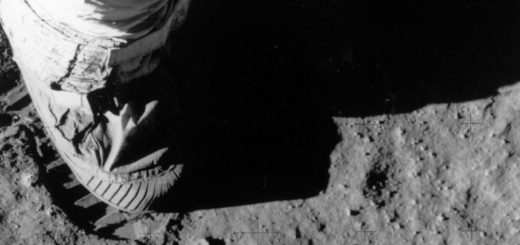Amazing Accomplishment – World’s First 4-D Printing For Ceramics Developed
This is really amazing and the shapes are incredible! Researchers at City University of Hong Kong (CityU) have successfully developed the world’s first 4-D printing for ceramics, which are mechanically robust and can have complex shapes. This could turn a new page in the structural application of ceramics.

Printed ceramic origami mimicking the Sydney Opera House. Credit: City University of Hong Kong
Ceramic has a high melting point, so it is difficult to use conventional laser printing to make ceramics. The existing 3-D-printed ceramic precursors, which are usually difficult to deform, also hinder the production of ceramics with complex shapes. To overcome these challenges, the CityU team has developed a novel “ceramic ink,” which is a mixture of polymers and ceramic nanoparticles. The 3-D-printed ceramic precursors printed with this novel ink are soft and can be stretched three times beyond their initial length. These flexible and stretchable ceramic precursors allow complex shapes, such as origami folding. With proper heat treatment, ceramics with complex shapes can be made.
The research team, led by led by Professor Lu Jian, chair professor of mechanical engineering, has achieved one more breakthrough by developing two methods of 4-D printing of ceramics.
4-D printing is conventional 3-D printing combined with the additional element of time as the fourth dimension, where the printed objects can re-shape or self-assemble themselves over time with external stimuli, such as mechanical force, temperature, or a magnetic field. In this research, the team made use of the elastic energy stored in the stretched precursors for shape morphing. When the stretched ceramic precursors are released, they undergo self-reshaping. After heat treatment, the precursors turn into ceramics.
“The whole process sounds simple, but it’s not,” said Professor Lu. “From making the ink to developing the printing system, we tried many times and different methods. Like squeezing icing on a cake, there are a lot of factors that can affect the outcome, ranging from the type of cream and the size of the nozzle, to the speed and force of squeezing, and the temperature.”
See also:
Amazing New Shape-Shifting Material – It Changes Shape Using Heat And Light
Paper Is Bending, Folding And Flattening Itself Due to A New Innovative, Low-Cost Technology
Low-Cost, Portable, Paper Battery Powered By Bacteria – Developed
Invisibility Material Created: Technology Can Protect Soldiers And Structures
In the first shaping method, a 3-D-printed ceramic precursor and substrate were first printed with the novel ink. The substrate was stretched using a biaxial stretching device, and joints for connecting the precursor were printed on it. The precursor was then placed on the stretched substrate. With the computer-programmed control of time and the release of the stretched substrate, the materials morphed into the designed shape.
In the second method, the designed pattern was directly printed on the stretched ceramic precursor. It was then released under computer-programming control and underwent the self-morphing process.
The innovation was published in the latest issue of top academic journal Science Advances under the title “Origami and 4-D printing of elastomer-derived ceramic structures.” All research team members are from CityU, including Dr. Liu Guo, Research Assistant, Dr. Zhao Yan, senior research associate, and Dr. Wu Ge, research fellow.
“With the versatile shape-morphing capability of the printed ceramic precursors, its application can be huge,” said Professor Lu. One promising application is electronics. Ceramic materials have much better performance in transmitting electromagnetic signals than metallic materials. With the arrival of 5G networks, ceramic products will play a more important role in the manufacture of electronic products. The artistic nature of ceramics and their capability to form complex shapes also provide the potential for consumers to create custom ceramic mobile phone back plates.
Furthermore, this innovation can be applied in aeronautics and space exploration. “Since ceramic is a mechanically robust material that can tolerate high temperatures, the 4-D-printed ceramic has high potential to be used as a propulsion component in the aerospace field,” said Prof Lu.
Riding on the breakthrough in material and 4-D-printing technique advancement, Prof Lu said the next step is to enhance the mechanical properties of the material, such as reducing its brittleness.



 Creators of mankind
Creators of mankind Description of “Tall white aliens”
Description of “Tall white aliens” Where they came from?
Where they came from? About hostile civilizations
About hostile civilizations The war for the Earth
The war for the Earth “Tall white aliens” about eternal life
“Tall white aliens” about eternal life Video: “Nordic aliens”
Video: “Nordic aliens” Aliens
Aliens Alien encounters
Alien encounters The aliens base
The aliens base UFO
UFO Technology UFO
Technology UFO Underground civilization
Underground civilization Ancient alien artifacts
Ancient alien artifacts Military and UFO
Military and UFO Mysteries and hypotheses
Mysteries and hypotheses Scientific facts
Scientific facts


















